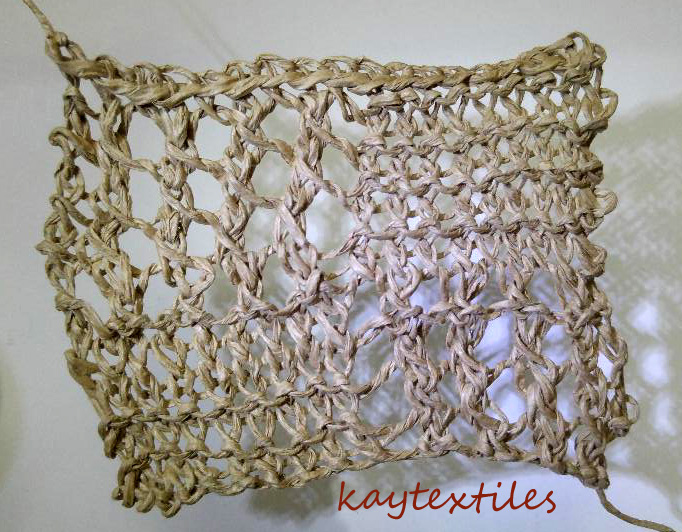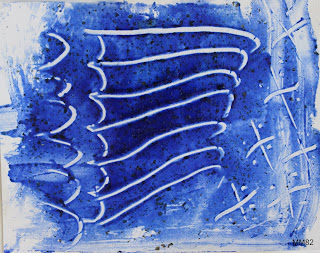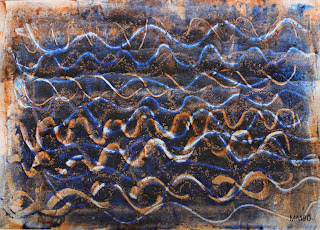Historical Study
When collecting my historical research there had been no trace of gulls. Since then, and thanks to 'Birds in Medieval Manuscripts by Brunsdon Yapp', one has been sighted in the Alphonso Psalter and I understand there are others. Yapp explains the lack of seabirds in manuscripts as being due to the fact that after the plundering of Lindisfarne in 793 there were no known centres producing manuscripts on the English coast. With this new find, additions have been made to my study.
MM65 - medieval gulls have been added to MM11 (which was infact just a study of a medieval fragment which I thought might prove useful...sorry this originally had you confused Sian).
Using this and other medieval design sources, a polystyrene print block was made (MM66).
This was tested on brown paper using Reeves Burnt Umber acrylic. As I am still working with paper, where possible, I oiled and scrunched this print using baby oil. When 'dry' this was coated with acrylic wax and stitched with metallics (MM67,68).
On a base of Seawhites of Brighton Yellow Ochre acrylic and again using the print block and Reeves Burnt Umber acrylic, papers were printed to bind the historical study (MM69,70)
and end papers reversing the colourways (MM71).
All the binding papers were oiled with baby oil to enrich the colours. When 'dry' they were mounted on card and the pages to date bound using brass binding screws and posts. As there was some seepage of the oil, even though it looked dry, a sheet of baking/greaseproof parchment was inserted between the cover and the pages.
Revisiting Ideas
As I said above, I'm still looking at using papers and translucency. Sian, was it really as long ago as June 2016 you suggested I look at the work of Cas Holmes! Earlier this year I was fortunate to see her exhibition at The Farnham Pottery. What work and what a setting for it. Lovely.
The next two samples (MM73 and 75) follow from that suggestion and my previous design work, Module 1, Image 292. A slice of this image was ripped, oiled and scrunched as was a piece of copy paper. This was laminated onto Anthropologie tissue (I'm sure I'm not the only person who gets more excited by the wrapping of a parcel than the contents) using acrylic wax. MM72 shows the background made for sample MM73. When both samples were stitched they still looked a little stark in places so a gave them a rub with a Koh-i-Noor Graphite Stick to highlight the ridges in the paper and tissue.
Fragment 1 - ANTHROP - 19cmWx18cmH
Fragment 1 - detail.
Fragment 2 - OPOLGIE - 19cmWx18cmH
Looking at these samples, for me there are things that work and things that don't. The straight pieces of black applique don't work, but the gull-like ones, that aren't too heavy, do...particularly some of the pieces on Fragment 2 where the black sheer has been rolled thinly by stitches.
Summer School 2017
Just one of the many samples from the wonderful time we had with Gwen Hedley.
Many thanks once again Sian.





















































